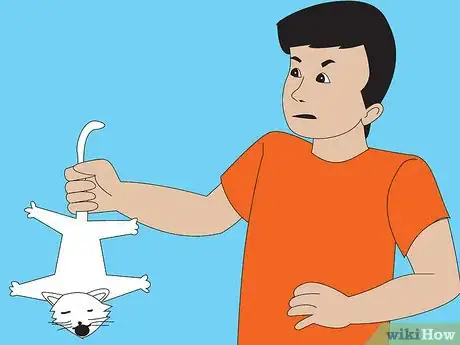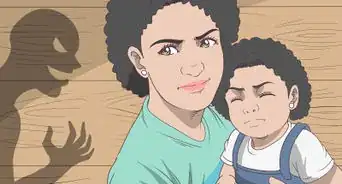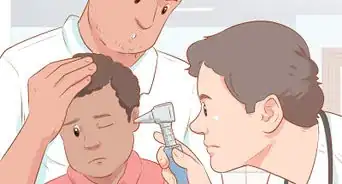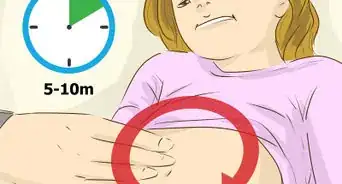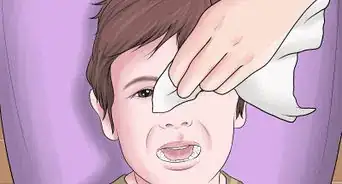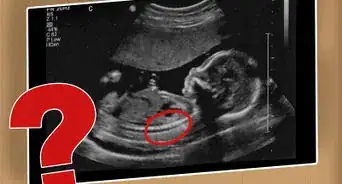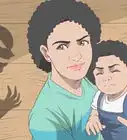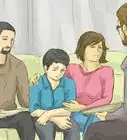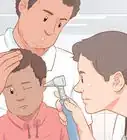This article was co-authored by Asa Don Brown, PhD, DNCCM, FAAETS. Dr. Asa Don Brown is a Clinical Psychologist with over 25 years of experience. He specializes in working with families, children, and couples, treating a variety of psychological disorders, trauma, and abuse. Dr. Brown has specialized in negotiation and profiling. He is also a prolific author having published three books and numerous articles in magazines, journals, and popular publications. Dr. Brown earned a BS in Theology and Religion with a minor in Marketing and an MS in Counseling with a specialization in Marriage and Family from The University of Great Falls. Furthermore, he received a PhD in Psychology with a specialization in Clinical Psychology from Capella University. He is also a candidate for a Masters of Liberal Arts through Harvard University. Dr. Brown is a Fellow of the American Academy of Experts in Traumatic Stress and a Diplomate for the National Center for Crisis Management and continues to serve a number of psychological and scientific boards.
There are 14 references cited in this article, which can be found at the bottom of the page.
This article has been viewed 87,403 times.
Child sexual abuse often leaves victims with wounds that are more than skin deep and while physical abuse might be the most visible, other forms of abuse, such as emotional abuse, also leave deep scars that extend far beyond childhood. Child abuse is any intentional harm, neglect, mistreatment or maltreatment intended on causing harm to the life of a child. Not all forms of child abuse can be observed with the naked eye. By understanding the difference between normal sexual behavior and common signs of child sexual abuse, parents can actively take the first steps in drastically making a difference in their children's lives.
Steps
Recognize Age-Appropriate Sexual Behavior in Children
-
1Understand age-appropriate sexual behavior. As children grow and pass through various stages of development, their knowledge and curiosity about sexuality changes during maturation. While each child is an individual who will develop at his or her own pace, there are generally accepted behaviors associated with a child's age and developmental stage. Note that because each child develops in his or her own way, not every child will display the behaviors shown below. Depending on the child's age, skip to the proper step for identifying the corresponding behaviors.[1]
-
2Identify common sexual behavior in preschool children (2-5 years):[2]
- Using childish sexual language to describe body parts
- Asking where babies come from and how they are made
- Showing and looking at genitals
- Touching or rubbing their own private parts
- Rare sexual behavior:
- Having sexual contact with other children
- Using sexually explicit language or discussing sexual acts
- Displaying adult-like knowledge or behavior
Advertisement -
3Identify common sexual behavior in school-age children (6-12 years):[3]
- Inquiring about menstruation, pregnancy, and other sexual behavior
- Masturbating in private
- Experimenting with other children (i.e. kissing, touching, showing, role-playing)
- Rare sexual behavior:
- Displaying adult-like sexual knowledge or behavior
- Masturbating in public
-
4Identify common sexual behavior in adolescents:[4]
- Experimenting sexually with other adolescents
- Using sexual language and talking among themselves about sexual acts
- Masturbating in private
- Asking about sexual behavior and relationships
- Rare sexual behavior:
- Having sexual contact with adults or significantly younger children
- Masturbating in public
Understand the Types of Child Sexual Abuse
-
1Learn the different forms of child sexual abuse. While legal definitions vary from state to state, child sexual abuse can be categorized into three types: inappropriate touching, non-touching activity and sexual exploitation. Read the following steps for determining each type.[5]
-
2Identify inappropriate touching:[6]
- Rubbing against a child's body or clothing in an intimate manner
- Digitally penetrating or penetrating with an object
- Touching or fondling a child's private parts or making a child touch someone else's genitals
- Tongue-kissing or kissing in a sexual way
- Oral-genital or oral-breast contact
- Playing sexual games
- Intercourse (vaginal, oral, or anal)
-
3Identify non-touching activity:[7]
- Forcing a child to masturbate
- Making sexual comments to a child
- Taking sexually explicit photos of a child
- Exposing genitals to a child
- Peeping or voyeurism
- Masturbating in front of a child
- Forcing a child to watch pornographic material
-
4Identify sexual exploitation:[8]
- Taking pornographic images or videos, or making a child model pornography
- Soliciting a child for prostitution
Recognize the Warning Signs of Child Sexual Abuse
-
1Understand what warning signs to look for when identifying sexual abuse, as children often show rather than tell when something is disturbing them. While there may be various reasons for fluctuations in a child's behavior, a combination of warning signals may indicate appropriate action be taken. Depending on the child's age, skip to the proper step for identifying the corresponding warning signs.[9]
-
2Identify signs of molestation in children 0-3 years:[10]
- Feeding and bowel problems
- Sleeping issues
- Crying excessively or fear
- Failing to thrive
-
3Identify signs of molestation in children 3-9 years:[11]
- Feeling shameful or guilty
- Victimizing others
- Fearing possibility of recurring attacks
- Masturbating excessively
- Wetting the bed, stranger anxiety, and other acts of behavior regression
- Eating troubles or changes in appetite
- Withdrawing from loved ones
- Sleeping issues or nightmares
- Fearing specific things like people, places, or activities
-
4Identify signs of molestation in adolescents 9+ years:[12]
- Abusing drugs and alcohol
- Displaying anger toward being forced into situations out of their control
- Engaging in promiscuous activity
- Showing signs of aggression
- Suffering from depression
- Sleeping issues or nightmares
- Performing poorly in school
- Eating troubles or changes in appetite
- Running away from home
- Having suicidal thoughts
- Displaying overly mature behavior
- Fearing possibility of recurring attacks
- Getting pregnant at an early age
-
5Identify physical warning signs of child sexual abuse. Although physical signs of sexual abuse are rare, if you notice any of the signs below, take your child to a doctor for an examination to determine the cause and test for STDs. Physical warning signs of child sexual abuse include:[13]
- Showing difficulty with walking, sitting, and standing
- Contracting sexually transmitted diseases (STDs)
- Experiencing pain during urination and/or bowel movements
- Bleeding, discharges or pain in mouth, genitals or anus
- Displaying involuntary urination or defecation
- Suffering self-inflicted injuries (i.e. cutting, burning, suicide attempts)
- Having torn, bloody, and stained underwear
-
6Identify other emotional, behavioral, psychological signs of child sexual abuse:[14]
- Setting fires
- Having poor social skills
- Displaying aggressive sexual behavior
- Acting extremely clingy and dependent
- Isolating oneself from social activity or being withdrawn
- Showing cruelty toward animals
- Observable decline in hygiene and self-care
Warnings
- If you believe a child is in immediate danger or has been a victim of sexual abuse, report the abuser to the police or your local child protective services agency. For additional information about reporting abuse, call the National Child Abuse Hotline at 1-800-4-A-CHILD.⧼thumbs_response⧽
- Please note that not all shifts in behavior, attitudes, or perceptions are indications that a child is being abused or experiencing abuse. It is important to remember that children are also affected by their environments.⧼thumbs_response⧽
References
- ↑ https://www.healthychildren.org/English/ages-stages/preschool/Pages/Sexual-Behaviors-Young-Children.aspx
- ↑ https://www.ncbi.nlm.nih.gov/pubmed/11075699
- ↑ https://www.aafp.org/afp/2010/1115/p1233.html
- ↑ http://pedsinreview.aappublications.org/content/34/1/29
- ↑ https://www.ncbi.nlm.nih.gov/pmc/articles/PMC4413451/
- ↑ https://www.thewholechild.info/resources/age-group-0-5/how-to-identify-child-abuse-ages-0-5/
- ↑ https://www.nspcc.org.uk/preventing-abuse/child-abuse-and-neglect/child-sexual-abuse/
- ↑ https://www.nhs.uk/live-well/healthy-body/how-to-spot-child-sexual-exploitation/
- ↑ https://www.michigan.gov/voices4/0,9249,7-378-87514_88400---,00.html
- ↑ http://dhss.alaska.gov/ocs/Pages/childrensjustice/reporting/know_sa_child.aspx
- ↑ https://www.childmolestationvictims.com/warning-signs-of-child-molestation/
- ↑ http://www.reportsexualabuse.com/#warnings
- ↑ https://www.aafp.org/afp/2001/0301/p883.html
- ↑ https://www.mayoclinic.org/diseases-conditions/child-abuse/symptoms-causes/syc-20370864













